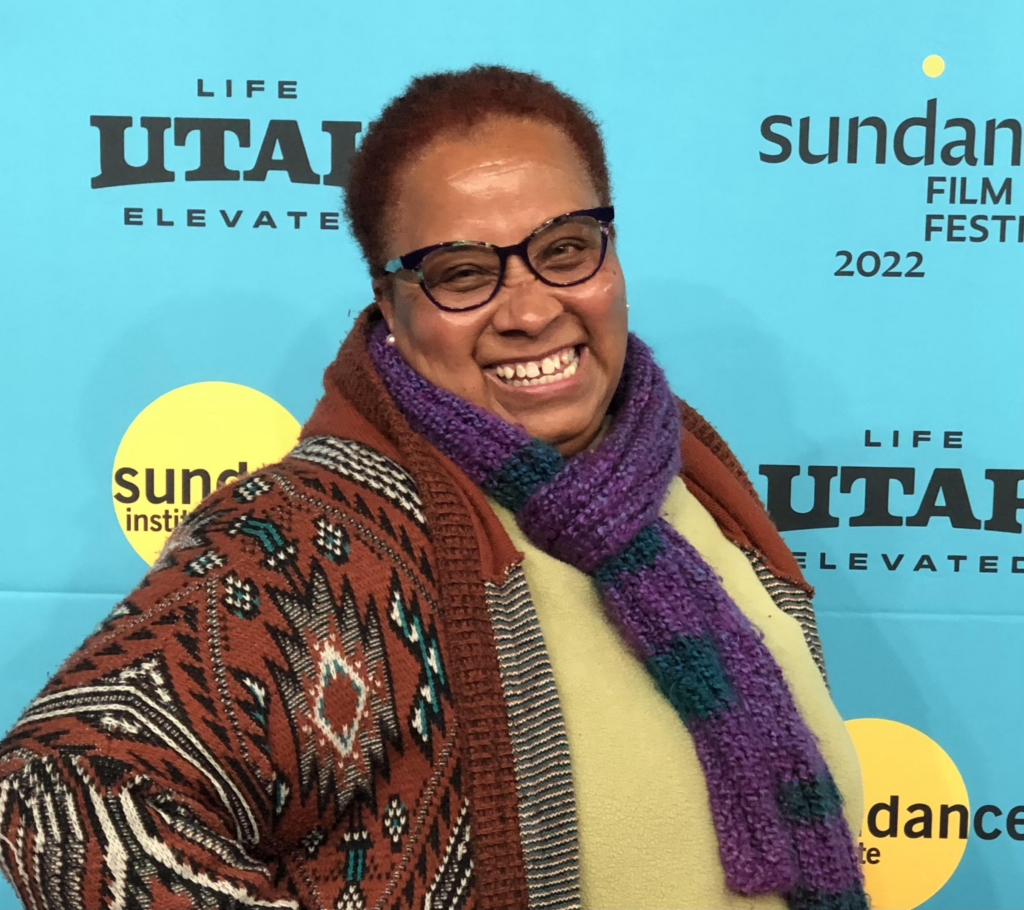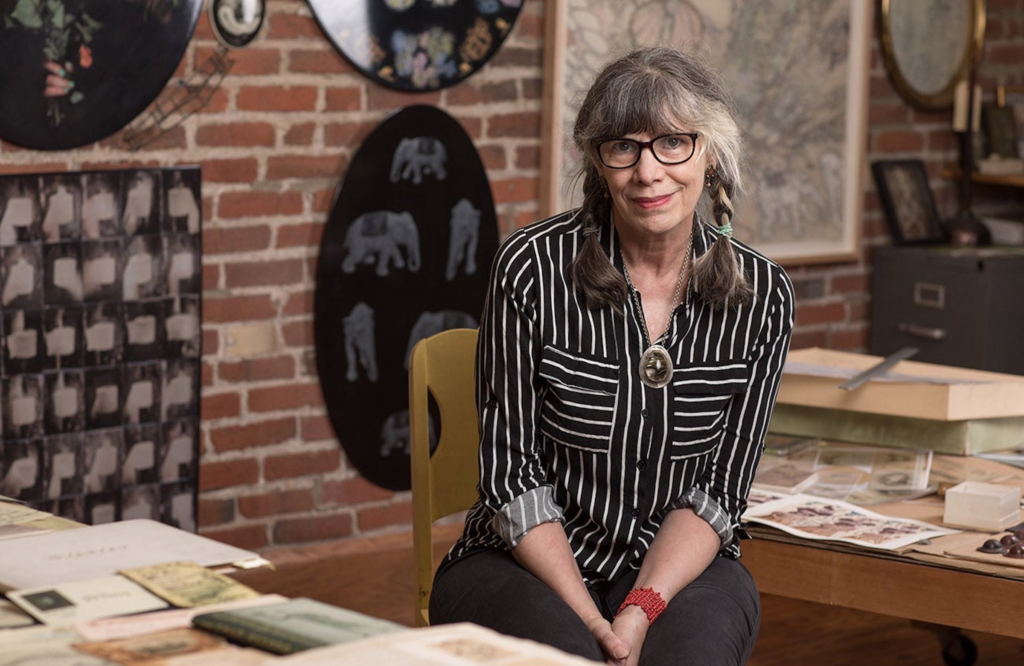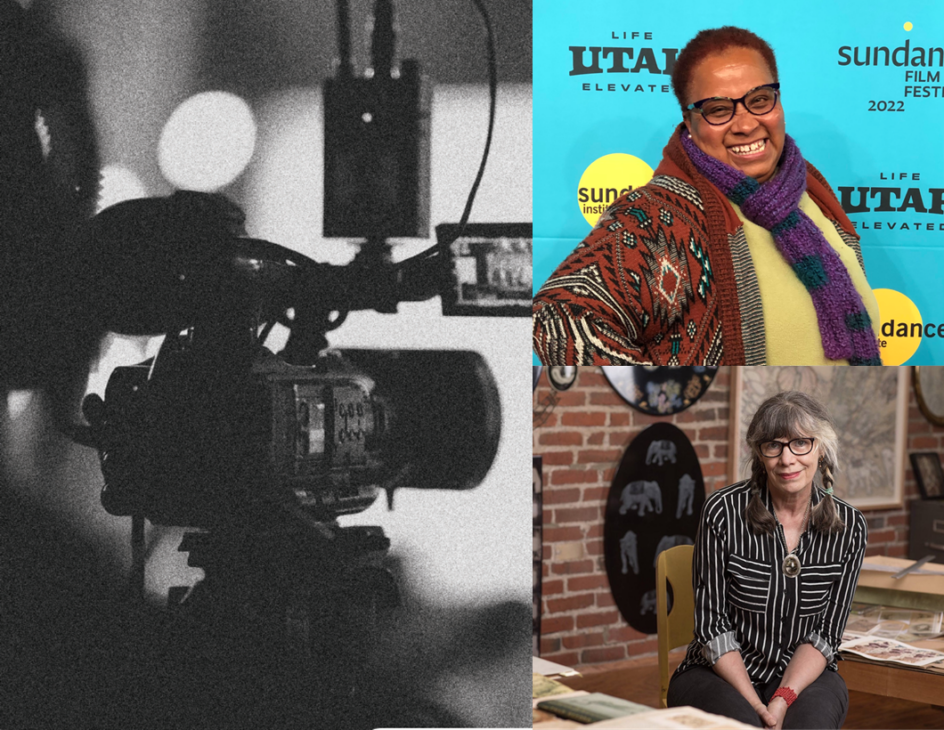Backed by a rich history of uplifting documentary filmmaking—and energized by what’s possible—Ohio Humanities has launched a partnership with Ohio State University’s Wexner Center for the Arts to support independent filmmakers.
The three-year film fellowship will help fund as many as five filmmakers-in-residence at the Wex each year who are working on humanities-informed documentary films with a connection to Ohio. Humanities-informed documentary film projects engage audiences with ideas and frameworks that tell stories of our shared human experience, strengthen communities and help bridge divides.
“It’s incredibly gratifying to have our work affirmed and bolstered by Ohio Humanities,” said Wexner Center Film/Video Studio Curator Jennifer Lange. “This partnership will allow us to deepen our support of Ohio productions and give them greater visibility.”
Here, meet two of our inaugural Ohio Humanities Film Fellows.

Zeinabu irene Davis
Stars of the Northern Sky
Filmmaker Zeinabu irene Davis is interested in our untold stories.
Through her past award-winning works, Davis, 61, has specifically highlighted the overlooked and undervalued lives of African American women. She’s uncovered their histories with care and creativity through documentaries, short narratives and experimental films.
Her latest project, a hybrid documentary titled Stars of the Northern Sky, is no different. In it, she will chronicle the legal trials of three enslaved women: Sojourner Truth, Phillis Wheatley and Marie-Joseph Angelique.
These women are not only united through their trial records, but also through the complexity of their stories and the strength with which they endured slavery. Through this work, Davis hopes to unearth more women like them—more of those untold stories.
“There are so many stories that we’ve lost,” she says. “I’m hopeful that there might be other people we end up discovering because of the research and visuals that relate to this film.”
Davis, who’s previously made films in Ohio, plans to shoot a portion of the documentary depicting Truth’s “Ain’t I a Woman” speech in Akron.
Her aim is to complete the film by 2026.
What story will this documentary tell?
Stars of the Northern Sky will tell the stories of three enslaved women of the north: Sojourner Truth, who is directly connected with Ohio because she gave her famous “Ain’t I a Woman” speech in Akron, and Phillis Wheatley, the first Black woman to have a book of poems and letters published in the U.S. back in 1764. And I’m also covering an Afro-Canadian woman by the name of Marie-Joseph Angelique, who hails from Montreal. She was the woman who supposedly burnt down Montreal in 1731. I want to use the film to create conversations and dialogue about American history and our past—stories we know have not been given much recognition.
How are you telling it?
The only one of these three women who was photographed is Sojourner; there are drawings and sketches of Phillis that were commissioned, and for Angelique, there’s nothing. One of the ways I’m dealing with that is by enlisting an artist to create and animate dolls in each woman’s likeness. I’m also going to film some reenactments this summer in Akron at the site of Sojourner’s “Ain’t I a Woman” speech. We’re hoping to do a movement interpretation, too, and I’m going to include people of different identities and abilities. The dances will be performed by local youth. I want it to be intergenerational. I’m also relying on several scholars from Ohio.
“The example of these three women, the odds they had to endure to make their names in history, inspires me. They were stars in their own right.”
Zeinabu irene Davis
What is the most challenging part of telling this particular story?
Figuring out how to tell a story that does not have photographs or a lot of physical evidence that we can actually film is challenging! There’s a lot of reimagining, based on the historical record, of what we think it would look like or what we think they would do. The women were all in different locations, too. Sojourner’s name was her name for a reason—she was in a lot of different places.
Why is this story important?
We only know these women in shorthand. We know the name Sojourner Truth, but we don’t know the depth of her story. You’ve probably heard of Phillis Wheatley and know she was a poet. Most people don’t know Angelique unless they’re from Montreal. So it’s important to make sure that we have knowledge of these women and what their stories represent and that we have honest discussions about the institution of slavery, colonialism, gender equality, women’s rights and race. We need to create opportunities to be able to talk about these things. I wanted to create something that would challenge people and make them talk about the institution of slavery and what it meant. But it’s also meant to be an open conversation. I’m not trying to point fingers or place blame. I just want us to be able to be honest about what the legacy of this institution is in Ohio and in U.S. history.
What about the story inspires you?
The example of these three women, the odds they had to endure to make their names in history, inspires me. They were stars in their own right. There are so many people like these women that we don’t know about. Hopefully, it will lead us to learn about other people who were part of this history. And just to know that they did—so that we could. We’re stepping up the ladder because of their achievements and their triumphs.
How do you hope the film inspires others?
I’m hoping it will bring unlimited imagination to audiences. What does freedom mean to you? I want it to have an intergenerational audience and to do some type of art installation with youth and community groups. Maybe there’s an art exhibition that has a home space where Sojourner would have been. Or maybe you could write a poem at a table where Phillis may have sat. Take a walk on this path in a gallery space, like Sojourner walking to freedom. She walked 17 miles with a baby in upstate New York. I want people to imagine some of that.
What conversations do you hope the film provokes?
I go back to the connection between various communities. We know at the time that Sojourner was in Akron, there was this movement for women’s rights. Women were traveling to these different areas to engage people with the idea of giving women the right to vote. Sojourner was there saying that all women need to have the right to vote. I want to make sure there’s something about the film or exhibition that pushes people to ask questions. What does this mean for us today? How do we incorporate some of that commitment to be sure people participate in the political process?

Mary Jo Bole
Family White Elephants
Mary Jo Bole is burdened with things.
The artist, 67, comes from an eccentric and influential family in Cleveland, with ties to industrial titans like Carnegie and Rockefeller. The women in her family, which she reverently refers to as “strong gals,” kept an archival-like library of their possessions. Now, it all belongs to Bole.
This collection of storied memorabilia has influenced her artwork over the years—so much so that she was inspired to examine its weight, both literally and metaphysically, in an upcoming autobiographical documentary titled Family White Elephants.
“It seemed to me that maybe film would be the way to kind of make sense of all these ingredients that have been in my work in different ways through all this time,” Bole said.
Alongside her interest in ephemera, the film will examine Bole’s long and celebrated career as an artist, the product of what she calls Cleveland’s “leftover Victorian culture.” Her sculptures, drawings and prints have been shown widely, in Ohio and beyond.
Bole is still putting the finishing touches on Family White Elephants and hopes to begin screening in late 2023 and 2024.
As for the stuff, she’s ready to let it go.
“I can’t wait to donate the rest of it,” she said.
“It’s me looking into this fancy side of my family. But it’s also about stuff and what we do with stuff, and this new leisure class, conspicuous consumption and how we’re going again into a class of rich and a class of poor.”
mary jo bole
What story will this documentary tell?
It’s about primarily myself as an artist and the work I’ve made that relates to my family story and growing up in the leftover Victorian culture in Cleveland. The foil is my mother, who I’ve always been close to. I took care of her the last 15 years of her life. Her mother—my grandmother—lived into her 90s, and her sister married Andrew Carnegie’s nephew. So it’s me looking into this fancy side of my family, too. But it’s also about stuff and what we do with stuff, and this new leisure class, conspicuous consumption and how we’re going again into a class of rich and a class of poor.
How are you telling it?
Because of a lot of early family loss, my grandmother annotated everything and kept it all together, so there’s this huge family archive of amazing family photographs. I also have her chatbook, where she records 60 dates she went on all over the country. I think some of the reason we have so much stuff is because of our connection to the Carnegie family. My family and the Carnegie family are disconnected, but I went down to Cumberland Island [which was once largely owned by the Carnegie family] to research my great aunt’s history. I donated a dress of hers, and that started the connection. I’m also using images in my studio, interviews and a mixture of qualities of film. The interviews are with my mother, a distant cousin and a park ranger who’s also an obsessed caretaker of the Cumberland Island National Seashore Museum. He is a wonderful character and ends up keeping the dress I donate. When I don’t have any film, I’ve made some animations. There’s music too.
What is the most challenging part of telling this particular story?
I’m trying to keep it to an hour, and I’m looking for ways to simplify it so people aren’t overwhelmed. I’m trying to include my own work in ways that don’t sound pedantic, so no “art speak.” I really want to leave people wanting more. It’s working in some places better than others, but I’m feeling pretty good about the way the story is weaving together.
Why is this story important?
I don’t know if it’s important. I just know that I feel like it’s a compelling story, and enough people are amazed at how much material I have. It’s a tantalizing quantity of stuff. I guess because I deeply care about the things I’ve made in my life, and I’m just seeing this as a way to make sense of my life at this point. I hope it’s meaningful to others. I know I care deeply, and I just have to hope that others do too.
What about the story inspires you?
I lived with my mom the last 15 years of her life. We’ve been close my whole life. And so being with her and having all of that stuff and going through it with her and then losing her—I just love seeing her in the film. She’s so natural and funny in it.
How do you hope the film inspires others?
I hope they see a person who has used their life and the circumstances thrown at them to make work that relates to this history. And to see something of what’s left of the Industrial Revolution and the guilt one feels being connected to industrialists. All this stuff is hemorrhaging out of the Industrial Revolution. It’s unwanted. So what happens to things? Being an artist, I’m making more stuff for this world! It does all seem intertwined, and I’m hoping this will make people have a picture of a person.
What conversations do you hope the film provokes?
I hope it makes them think about their own family pictures, and what it’s like to go back and piece together those things. And the relationship with parents and what those relationships mean to you. How lucky I’ve been! I hope they find my work meaningful. I hope that too.
Taylor Starek is a Senior Storytelling Strategist at Kristy Eckert Communications.

